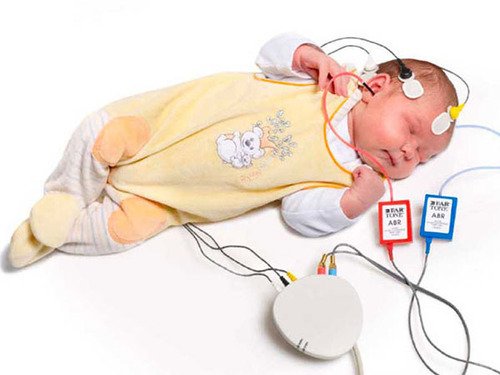BERA Hearing Test
What is BERA Test?
BERA is an Otoneurological test that examines the auditory, brain function in response to the sound stimulus. Only the testing and interpretation of the results is performed by the doctor of an audiologist-specialist in otorhinolaryngology. With this test, it is possible to estimate the rate of passage of the nerve impulse through the auditory nerve. The review takes 1 hour.
Why it is done?
A healthy hearing nerve transmits nerve impulses from the inner ear (kohlee) to the brainstem by a known speed. This test can determine the rate at which nerve impulses reach the prolonged brain and multiple levels of the central nervous system (CNS) and whether there is a delay that can indicate the occurrence of hearing loss. In this way, the type (conductive or sensoryineural), degree (hearing threshold) and hearing loss (internal ear or higher parts of the hearing) can be determined.
Who need a BERA Test?
BERA is an objective audiological test for hearing done usually for children less than 05 years or patients who are difficult to test or malingerers.
What are symptoms which says that someone undergoes BERA Test?
- Detection of hearing loss in children less than 05 years and difficult to test adults
- To detect Magnitude of hearing loss
- Rough idea of types of hearing loss – Conductive/Sensorineural hearing loss
- Site of the lesion i.e Retrocochlear/Cochlear
- To study any central auditory pathway defects
HOW BERA TEST IS PERFORMED?
BERA is an objective method that does not depend on patient collaboration. It is performed in a lying position. It is desirable to be calm or to sleep. For children, it is performed while awake, natural sleep, sedation, or rarely in short-term anesthesia.
Different sounds are heard through the handset. This test measures the change in electrical activity of the brain (EEG) in the emission of acoustic stimuli. Through the electrodes placed on the surface of the head (to the area behind the ear, forehead and darkness), the electrical potentials created in the auditory pathway are recorded in the first ten milliseconds after the sound stimulation. The finding is interpreted on the basis of the received waves that the device registers.


